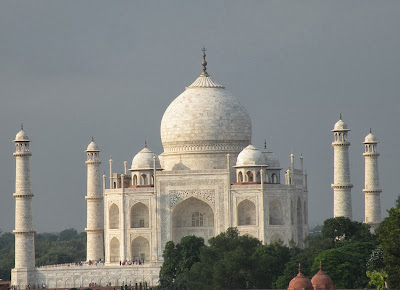 |
| Hawa Mahal,Jaipur |
Amidst the main market area and bustling city of Jaipur, Hawa Mahal or the Palace of Wind appeared to me like a memento of colourful days of the Kings and Queens. With panoramic view of vast stretch of Aravalli hills, experiencing the upright example of Rajput architecture dipped in welcoming pink colour was like a splashing sensation filled my mind with delectation and conveyed the true flavour and grandeur of the vibrant city. It was very surprising to me that, instead of constructing interminable stretch of defensive walls or in lieu of exhibiting valour in the battlefield, the warriors built Hawa Mahal, to entertain the veiled royal ladies so that, they could watch the activities of the city, staying hidden in the curtain walls. The two hundred years old architectural curtain was in its untiring presence and was upstanding as ever with discriminating display of superbly carved windows.
 |
| Street of Pink city,Jaipur |
The famous Hawa Mahal or literally the superb architectural veil with 953- windows, amidst main market of the Pink City was built by the king of Jaipur Sawai Pratap Singh in 1799 for the royal ladies, so that they could watch the activities taking place in the bazaar and the surrounding streets behind the decorative stone-carved screens. The initiation of Maharaja Sawai Jai Singh II to shift their capital from the hilltop of Aravalli hills was the result of Jaipur city in 1727 and that was the foundation stone laid in the mind of the Rajput warriors to build such a picturesque city.
The mighty pyramidal shaped five storey building overlooks one of the Jaipur`s main streets with its shape like a crown adorning Lord Krishna`s head. Unique thinking and superb creativity is associated with the architecture. The site offers a superb view of the city, including many old palaces and houses, which were painted ochre-pink for the 1853 visit of Prince Albert.
Hawa Mahal, amidst the bustle of Jaipur city sweetly conveyed the message that there is no limit for innovative creations. Time has erased the memories of bloodsheds but, the legacy of art and architecture of the era of Kings and Queens has their effect of everlasting remembrance.
















































